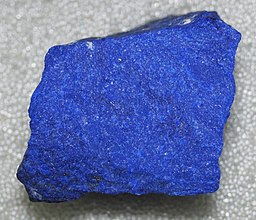User Tools
This is an old revision of the document!
Afanyu
Afanyu /æ'fænuː/ was a civilization established in the second half of the second revolution and located between Makam and Loodon rivers.
Afanyu was expected to dominate the region, but instead got engulfed in a non-stop fight for power between its many kingdoms, which lasted for two and a half centuries. At one point Afanyu was comprised of over 50 separate kingdoms.
By the beginning of the 20th CSR Afanyu stabilized somewhat and was divided into Upper and Lower Kingdoms. Upper Kingdom was invaded by Potus Aylis in the 1960s and lost after 6 years of war. The Lower Kingdom stood idly by, refusing to help. As soon as loodonian forces became victorious, the Lower Kingdom attacked Potus, hoping that his forces were unprepared after being battered by the six-year war, but were decisively defeated and submitted to Loodon.
Afanyu's influence on the history of the region, thus, turned out to be very limited, but it became famous for its floating stones, known as afanyu stones.
Table of Contents
Name
Origins
The Kefan people are thought to have migrated directly from Duls Settelements to a valley between Makam and Loodon about two centuries prior.
History
At that time the Kefan arrived to the region, it was much drier. That might have pushed them to develop water irrigation systems that enabled them to grow crops, but also extend the technology to effectively create a sewer system. This greatly increased the rate of urban development and quality of life. First major city, Tarif, was established at the end of 16th CSR.
The beginning of Afanyu's civilization is usually dated at 1650 SR, when the first king Rufu Aoa became ruler of the whole region and united city-states under a single rule. By this time Afanyu had advanced agriculture, division of labor, and even a class of politicians.
However, a decade later Rufu Aoa's rule made a pivotal turn to favoritism, when a lafit (a governor) of a relatively unimportant city of Zo, pleased the king, and when offered a reward, requested independence. Due to the city being very small and economically dependent on the rest of the country, Rufu agreed to the demand, provided the new kingdom of Zo considers Afanyu its metropolitan state, effectively making the kingdom of Zo Afanyu's colony.
Possibly seen as a one-off gesture that stresses the kindness and generosity of the king of the land, the move proved to be disastrous, as within the next several years two more cities lodged requests for independence. Rufu sent an army to one of the cities in order to ensure order and to quell the emerging trend for separatism before it spreads too far. But the gravity of the situation changed when the second largest city of Afanyu, Ari, announced its request for independence. This effectively threw the kingdom into a civil war that would last for over two centuries.
Initially the country was divided into two: those who support Rufu's rule, which included the kingdom of Zo, and those who support Ari in its opposition to Rufu.
Economy and trade

Although political power was concentrated in the cities of Ari and Gled, Tarif remained the economic center of the kingdom throughout its tumultuous history.
Afanyu was known as the source for lapis, which was considered to be a precious stone all throughout the north east. It supplied lapis to Darda and Osa Nara. It had a trade agreement with Osa Nara to not trade lapis with Xornerian, but this was easily sidestepped by exports into northern Tarnaria to Tonaran, from which it found its way to Xornerian, albeit at a much higher price.
Afanyu made use of alabaster to create sculptures. Sculptures of superhero warriors became an important export item for Tarif by the end of 19th CSR.
Having close trade ties with Darda and Osa Nara, Afanyu imported metals, wood and essential oils. Resin was imported from Xornerian.
